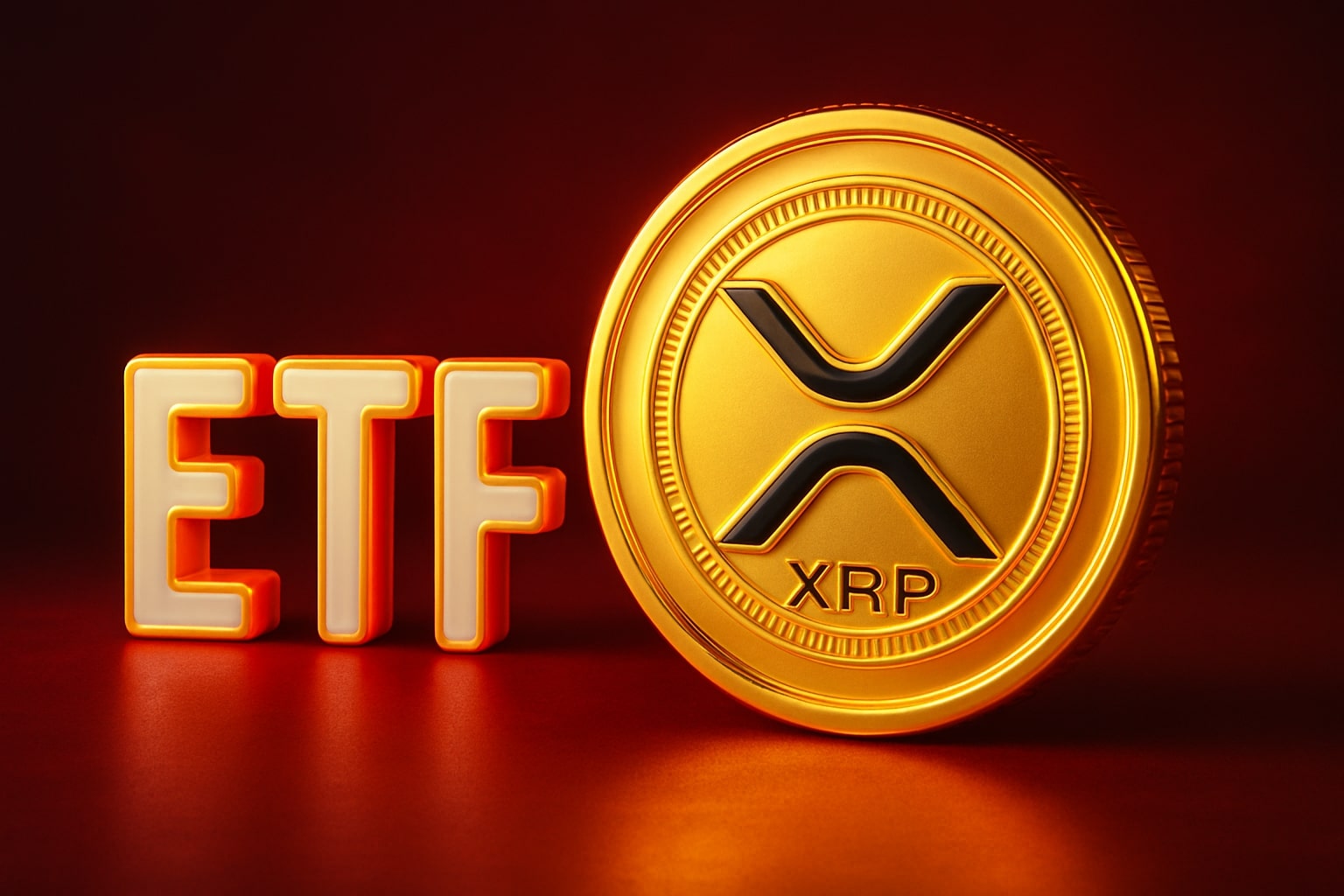
Gold Price Forecast - XAU/USD Climbs Above $4,100, Bulls Eye $4,250 Resistance
Gold (XAU/USD) consolidates near $4,116, after breaking above $4,050, fueled by Fed rate-cut expectations and a 0.25% drop in the U.S. Dollar Index (DXY 99.46) | That's TradingNEWS
Gold (XAU/USD) Price Holds Above $4,100 as Bulls Target $4,250 Amid Fed Pivot Hopes and Dollar Weakness
XAU/USD Market Overview and Current Price Action
Gold (XAU/USD) continues to consolidate near $4,116.50 per ounce, hovering just below its three-week peak of $4,150, after briefly touching the $4,152 resistance earlier on Tuesday. The metal has now logged a 2.1% gain since the start of the week and remains one of 2025’s strongest-performing assets, up nearly 57% year-to-date. The advance comes as traders reposition around U.S. macro signals—slowing job growth, cooling sentiment, and rising expectations of a December Fed rate cut, now priced at 64% according to futures markets.
Spot gold’s intraday range extended between $4,100.22 and $4,150.36, while U.S. gold futures (GCZ25) slipped slightly 0.1% to $4,116.30, signaling mild profit-taking after Monday’s breakout. The metal’s technical tone remains bullish, but momentum indicators show early fatigue, with intraday oscillators pulling back from overbought zones.
Macro Drivers: Shutdown Resolution, Labor Weakness, and Fed Pivot Probability
The U.S. Senate’s approval of a bill to end the historic federal government shutdown catalyzed risk-on sentiment across commodities, pushing gold’s bid higher as the U.S. Dollar Index (DXY) eased to 99.46 (-0.25%). The end of the data blackout revives the release of key macro indicators—especially payrolls, inflation, and consumer sentiment—all crucial for the Federal Reserve’s December policy decision.
Recent macro data has leaned decisively soft. The U.S. economy shed jobs for the first time in eight months, particularly in public-sector roles and retail, with October job losses near 50,000 and consumer confidence plunging to a 3.5-year low. The market has translated this slowdown into policy expectations: a 50 bps rate cut in December, and an 80% chance of a second move by January.
Gold’s bullish response reflects anticipation of a lower-rate environment that reduces the opportunity cost of holding non-yielding assets. Meanwhile, Fed Governor Stephen Miran’s remarks supporting a “front-loaded” cut reinforced the shift in sentiment, driving safe-haven flows even as equities rallied.
Dollar, Yields, and Market Correlations: The Unusual Dual Rally
Gold’s performance has decoupled from traditional correlations. Normally, a firming equity market suppresses bullion demand, but this week both U.S. indices and XAU/USD advanced in tandem. The Dow Jones (DJIA) gained 0.75%, while the S&P 500 (SPX) slipped 0.04%, and the Nasdaq 100 (NDX) fell 0.54%—yet gold remained resilient above $4,100.
This dual rally underscores that gold’s strength now stems less from fear and more from strategic hedging against U.S. policy volatility. As rate-cut expectations rise, institutional investors have increased exposure to physical and ETF-linked gold holdings, positioning for a soft-landing narrative. Treasury yields remain anchored near 4.12% on the U.S. 10-year, and the DXY’s decline below 99.5 signals mild easing in dollar demand, allowing gold’s bid to sustain despite equity rotation.
Technical Outlook: Gold’s Bullish Channel Targets $4,250 Resistance
Technically, XAU/USD has completed a decisive breakout above its two-week consolidation range capped at $4,050, forming a bullish continuation pattern on the daily chart. Monday’s candle confirmed a breakout with heavy volume, while Tuesday’s session consolidates above the $4,100 handle—a critical validation for sustained bullish structure.
Immediate resistance lies between $4,150–$4,200, where supply has consistently capped gains since October 22–24 highs. A confirmed close above $4,150 could open the path toward $4,220, a key pivot from October 20, before challenging the all-time high zone near $4,380–$4,400.
The Relative Strength Index (RSI) stands at 68.5, nearing the overbought threshold, while MACD remains comfortably above its signal line, affirming bullish momentum. The 50-day EMA at $4,062 serves as immediate support, with additional layers at $4,000 and $3,880 (the October 28 low). A breakdown below $3,880 would mark a structural failure of the medium-term uptrend, turning focus toward $3,750.
Short-Term Price Action and Sentiment Divergence
Retail sentiment data reveals that 74% of traders are currently net-long, reflecting elevated optimism following the breakout. Historically, such crowd positioning has preceded short-term pullbacks, particularly when leveraged longs exceed 70%. Contrarian setups thus suggest the possibility of a temporary correction toward $4,050–$4,000 before fresh accumulation emerges.
Volume analysis supports this thesis: cumulative futures turnover fell 18% from Monday’s peak, and speculative positioning has begun to flatten. However, institutional inflows remain firm—ETF gold holdings rose by 5.4 tons week-over-week, marking the first net increase since early October.
Technicians argue that as long as gold remains above $4,000, the broader bias remains decisively bullish, with any retracement seen as corrective rather than trend reversal.
Central Bank Demand and Physical Market Trends
Beyond speculative flows, sustained central-bank accumulation continues to underpin gold’s macro floor. Data from the World Gold Council shows global central banks purchased 127 tons in October, led by China (26 tons), India (12 tons), and Turkey (9 tons). The People’s Bank of China has now expanded its reserves for 13 consecutive months, with total holdings exceeding 2,325 tons, reinforcing the metal’s strategic appeal amid persistent geopolitical risk.
Physical demand also received a seasonal boost from India’s Dhanteras festival, which traditionally triggers jewelry buying. Spot premiums in Mumbai climbed to $18 per ounce over global prices, the highest since March, reflecting revived consumer appetite as gold trades near record nominal levels.
However, rising prices have also constrained retail affordability in emerging markets, where currency depreciation amplifies costs—particularly in Southeast Asia and parts of Africa. These regional disparities add nuance to the global demand picture: while institutional and sovereign accumulation drives the long-term trend, short-term consumption remains price-sensitive.
Read More
-
JEPI ETF Edges to $57.11 as Yield Holds Above 8% and Covered-Call Premiums Power Income
11.11.2025 · TradingNEWS ArchiveStocks
-
XRP ETFs Slide — XRPI Down to $14.18 and XRPR to $19.80 as Investors Lock In Gains After Record Run
11.11.2025 · TradingNEWS ArchiveCrypto
-
Natural Gas Price Steadies Near $4.40 as Record U.S. Supply and Weather Volatility Define Market
11.11.2025 · TradingNEWS ArchiveCommodities
-
USD/JPY Price Forecast - Yen Holds Near 154.00 as Yen Slides and Market Awaits Fed-BoJ Policy Shift
11.11.2025 · TradingNEWS ArchiveForex
Profit-Taking Emerges but Downside Remains Limited
After a three-day rally, some traders booked profits around $4,150, triggering mild intraday pullbacks. Analysts attribute this to “halfway-back” resistance—roughly the 50% retracement from $4,380 to $3,880—where speculative longs traditionally reduce exposure.
Still, downside pressure appears contained as macro conditions favor gold retention. Traders expect that delayed U.S. inflation data—due next week following the government reopening—will confirm softening price pressures, cementing the Fed’s easing bias. If confirmed, the yield differential between gold and short-term Treasuries could narrow further, reinforcing the metal’s attractiveness as a store of value.
Comparative Performance: Silver, Platinum, and Palladium Rally in Tandem
The bullish momentum in gold has spread across precious metals. Silver (XAG/USD) climbed 0.2% to $50.68, reaching its strongest level since October 21, while platinum (XPT/USD) advanced 0.6% to $1,586.60, and palladium (XPD/USD) surged 2.5% to $1,450.75. The synchronized advance underscores broad investor appetite for real assets amid moderating yields.
However, relative strength favors gold, whose performance remains structurally superior. The gold/silver ratio at 81.2 reflects continued preference for stability over cyclicality. Analysts suggest that until inflation re-accelerates or manufacturing data improves, silver’s catch-up potential remains capped, keeping gold the preferred hedge.
Institutional Strategies and ETF Inflows
Institutional positioning continues to favor accumulation into dips. SPDR Gold Shares (NYSEARCA: GLD) reported inflows of $743 million over the past five sessions, reversing a month-long exodus. Hedge funds tracked by CFTC data increased net-long futures positions to 162,000 contracts, up 11% w/w.
At the same time, insiders at major bullion miners like Newmont Corporation (NYSE:NEM) and Barrick Gold (NYSE:GOLD) have begun modest stock purchases following the October correction. Corporate filings show Newmont CEO Tom Palmer acquired 25,000 shares at an average price of $34.22, signaling internal confidence in sustained high gold prices through early 2026. This insider accumulation aligns with rising producer margins, as average all-in sustaining costs remain below $1,350/oz, leaving substantial profitability at current spot levels.
Outlook: Path to $4,250 Depends on Fed Confirmation
The next decisive move hinges on the Federal Reserve’s December policy outcome. A confirmed 50-bps rate cut could propel XAU/USD toward $4,250–$4,300, matching the upper target of the breakout triangle pattern identified on the four-hour chart.
Conversely, if policymakers signal caution or delay easing, a temporary retracement toward $4,000–$3,950 is plausible. Still, structural demand, macro uncertainty, and sovereign accumulation combine to underpin the broader bullish thesis.
Verdict: Bullish Bias Maintained (Buy on Dips)
Considering the data—record central-bank purchases, fading dollar strength, tightening yield spreads, technical resilience above $4,000, and renewed institutional inflows—Gold (XAU/USD) retains a Bullish bias. The short-term strategy favors Buy on Dips, targeting $4,250–$4,380, with risk managed below $3,880.
Momentum is moderating but remains constructive, and until the Fed signals otherwise, gold’s multi-quarter rally remains intact, backed by a mix of macro softness, policy anticipation, and geopolitical demand resilience.



















